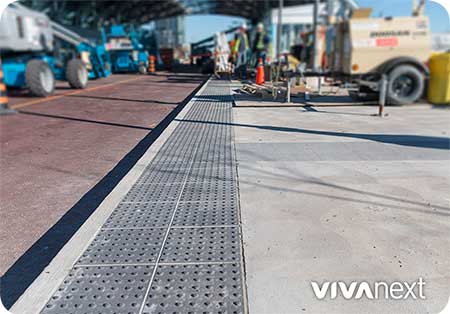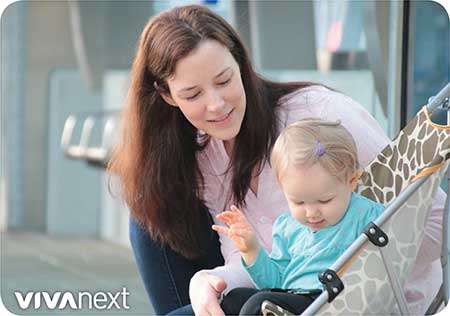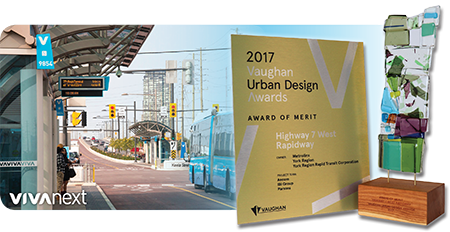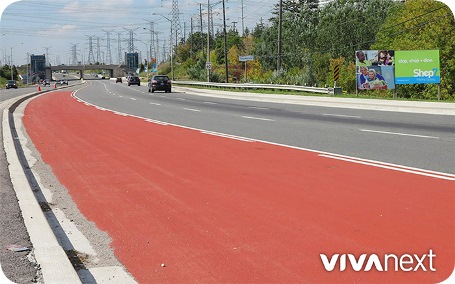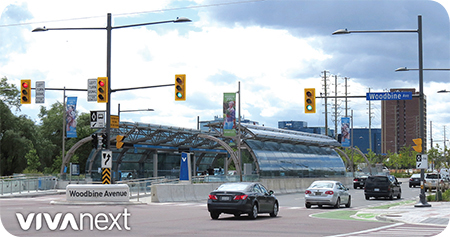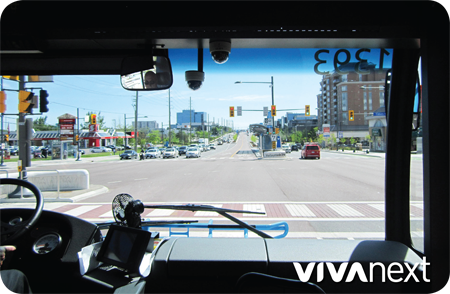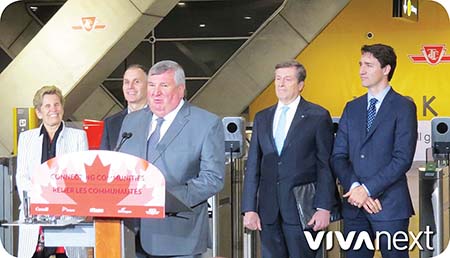
This historic weekend of transit firsts in Vaughan kicked off in style.
Prime Minister Justin Trudeau joined Premier Kathleen Wynne, Toronto Mayor John Tory and many other dignitaries to officially cut the ribbon on the Line 1 subway extension, at Vaughan Metropolitan Centre [VMC]. Then, they rode the subway from the VMC station to the new York University subway station for a press conference.
“The Toronto-York Spadina Subway Extension will mean a faster commute, less time in traffic and more money in people’s pockets as they trade their cars for a subway ticket,” Prime Minister Trudeau told the crowd at York University station.
That’s music to our ears!
The crowd included partners from all three levels of government, who worked together to make this project a reality. Also on hand were many members of our vivaNext team, who played a key role in this project, working with the TTC on the York Region stations. Joining the crowd were the many partners who helped make this happen.
three subway stations in York Region!
In just two days, York Region will have three shiny, new subway stations open for service: Pioneer Village, Highway 407 and the end of the line, Vaughan Metropolitan Centre. On opening day and Monday, members of our team will be on hand to answer your questions and help you find your way.
Our brand new, flagship bus rapid transit station will greet riders at the VMC, forging the connection between our rapid transit network in York Region and the new subway.
Also coming later this month is the GO train connection at the new Downsview Park station, where commuters on the Barrie GO train can connect to the Line 1 subway extension.
“If we build it, they will come”
Now, with the 8.6-kilometre subway extension, downtown is a mere 42 minutes away, but we expect subway traffic to flow both ways. Wayne Emmerson, York Region Chairman and CEO, said, “If we build it, they will come.” He called the subway a “once in a lifetime opportunity,” saying it “will help further develop an urban community that is transit-oriented, forward-thinking and has economic development opportunities to benefit current and future generations.”
“Big transit takes time”
Premier Wynne acknowledged the time and effort of all levels of government that came together to connect the heart of York Region to downtown. She also gave a nod to our new Highway 7 West rapidway, saying that downtown foodies can hop the vivaNext rapid transit system to restaurants in Richmond Hill.
But she summed it up best with: “What an amazing day this is!”
We agree, Premier Wynne! And this Sunday will be even better, when the subway and our rapidway open for service, and you can experience the ride firsthand. It’s going to be a rush! We hope to see you there.

